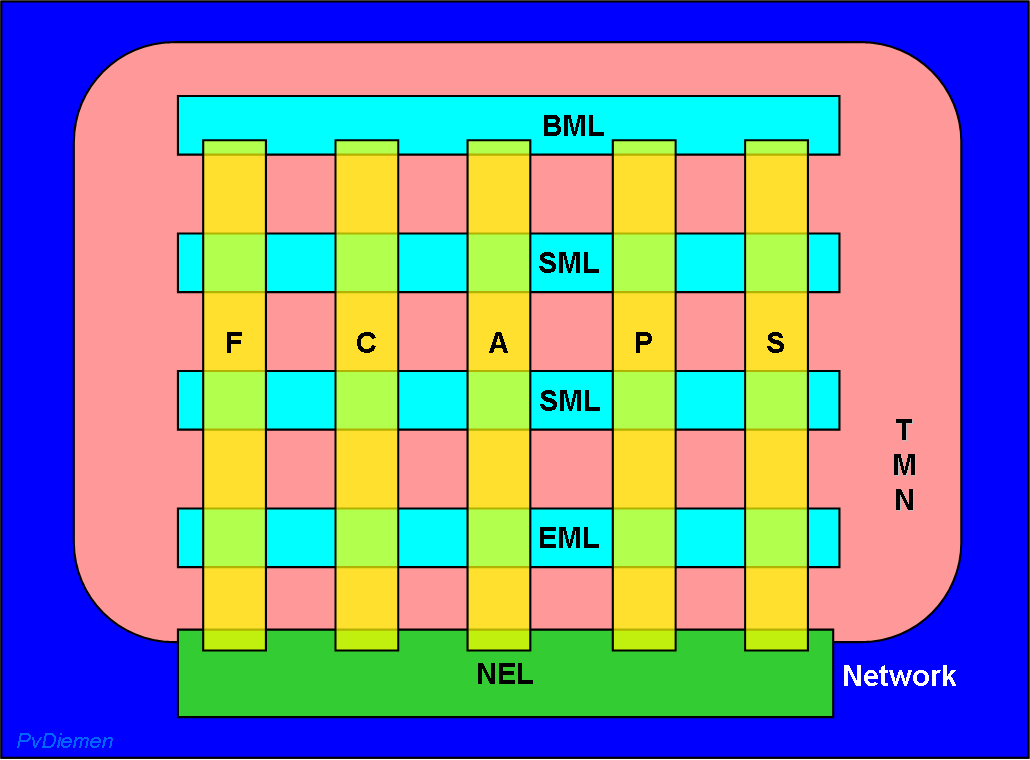
3 Management Functional Areas
Last update
PvD
3.9 Summary
The Management Functional Areas are usually characterized by FCAPS:
A Management Functional Area is not autonomous; it depends on functions in other Management Areas. The Management Functional Areas are important aspects of network management, i.e. goals to achieve, but they may start using the same data.
The order of functional areas does not suggest priority; in a full-grown TMN all functions need to be present. In starting TMN applications, Fault Management and Accounting Management are often asked first, but Fault Management is virtually impossible without some form of Configuration Management (equipment management). Also, Configuration Management is where all daily operations are carried out; here lies the potential gain for effective network management. With the growing competition (boasting QoS, SLAs), Performance Management is gaining priority.
Due to the overlap of sub functions in the Management Functional Areas, mapping of these sub functions to the TMN Logical Layered Architecture can only be done approximately. As the Management Functional Areas are defined orthogonal to the Logical Layered Architecture, the sub functions often cross layers and overlap with other functional areas.
Many functions are implemented in processes which are executed cyclically.
The involvement of BML with FCAPS will not be significant, however on the other layers –including NEL– will be considerable.

The management of the TMN itself should get special attention: 'General Management', 'System Management' or 'Self Management'.
The general functions not related to a particular functional area or hierarchical layer but applicable to all of them are called SMFs; they are discussed in the next chapter.
Next chapter: Concepts
Up to Contents
Up to Index
=O=